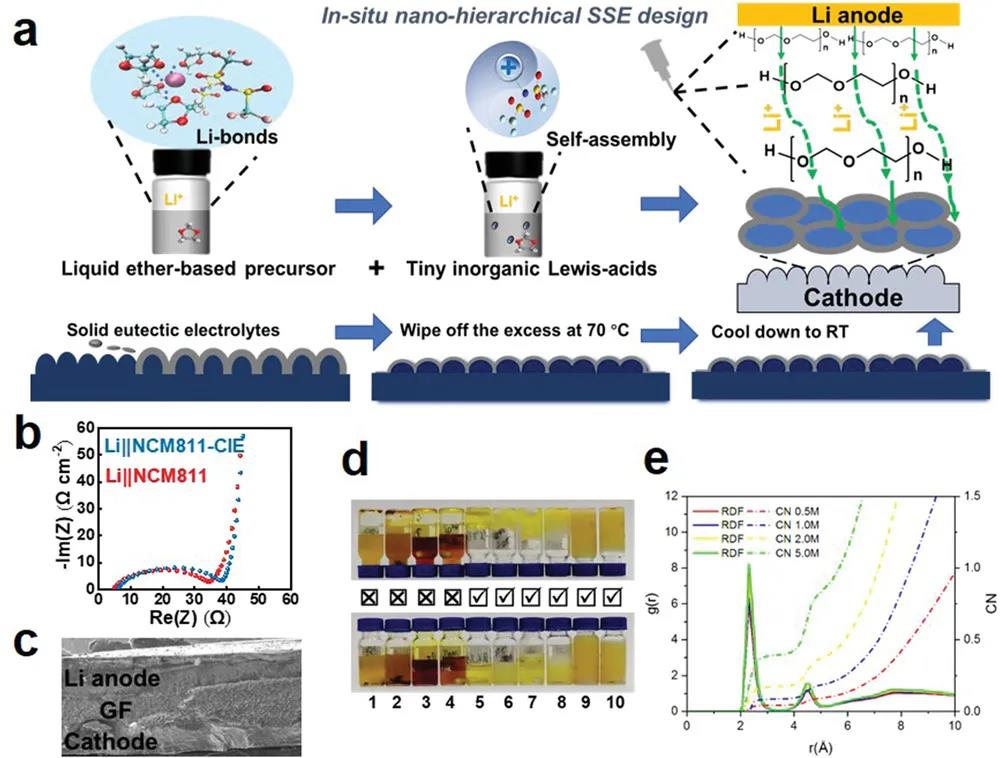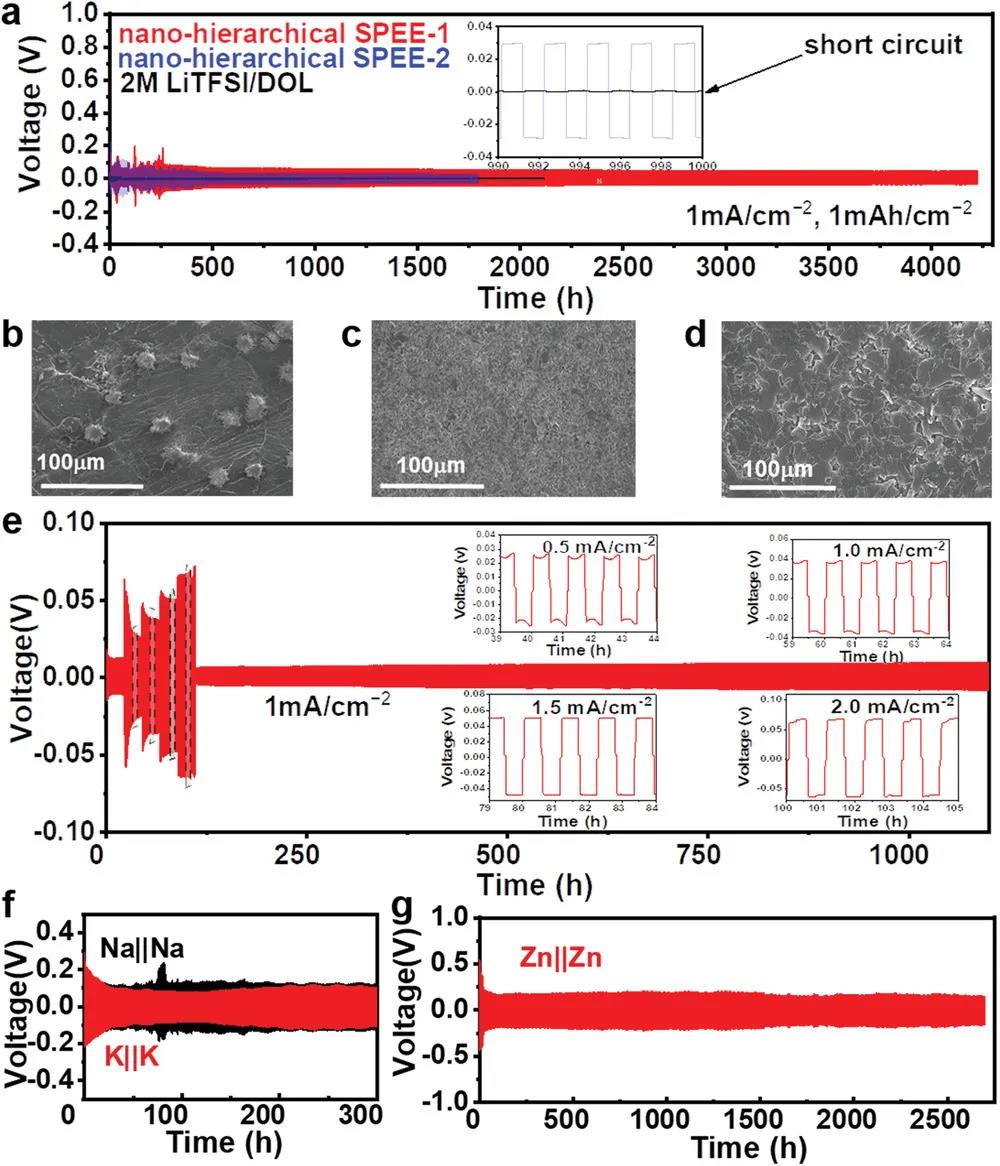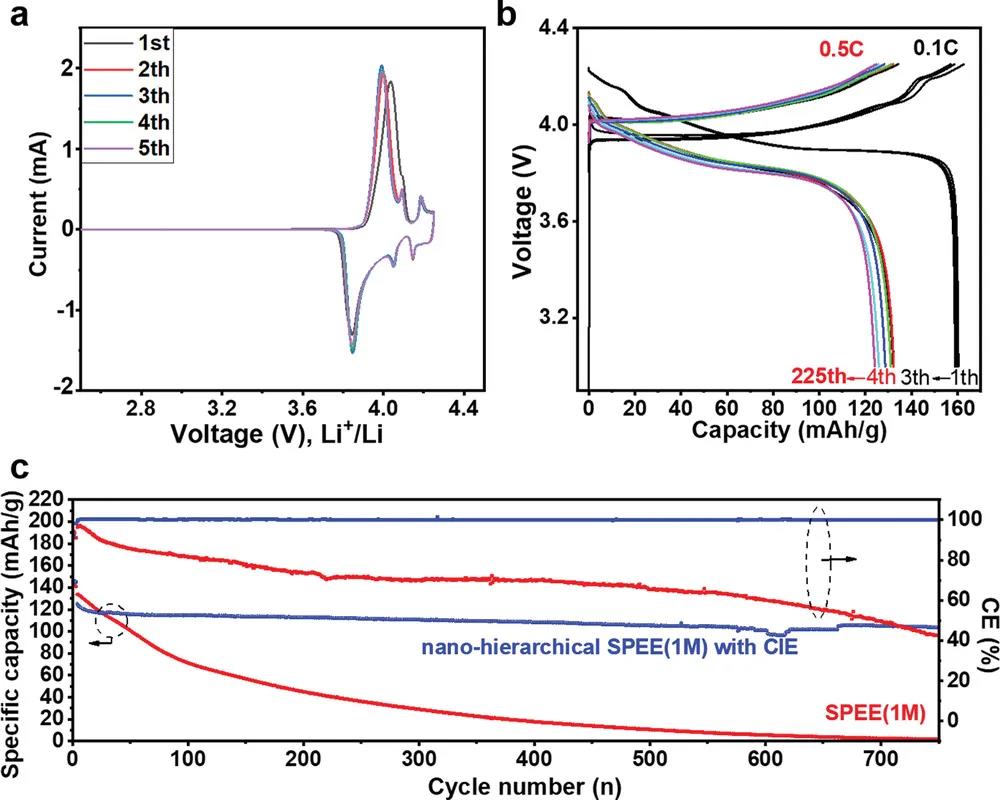Academician Zhang suojiang, Professor Cai Weibin, etc. AFM: built in quasi solid polyether electrolyte to realize stable cycle of high voltage and wide temperature lithium metal battery
QQ Academic Group: 1092348845
Detailed
Solid state lithium metal batteries (sslmbs) have shown broad prospects in high energy density and high safety energy storage devices due to their reliable electrochemical performance, inherent safety and excellent abuse tolerance. However, sslmb has been affected by the poor interface stability between solid electrolyte (SSE) and other battery modules. In order to achieve close interface contact and compatibility with lithium, an effective and easy industrialization strategy is in-situ solid-state polyether electrolyte (spee), which is formed by using traditional ether based electrolytes, such as 1,3-dioxolane (DOL), through cationic ring opening polymerization in the upgrading process of electrochemical batteries. However, it has two unavoidable problems, including incomplete polymerization and initiator residue, which leads to a "trade-off" between ionic conductivity and stability. Therefore, spee can be used at high temperature (especially over 70 ℃) ° C) It shows poor electrochemical performance at high voltage (above 4 V).
In view of this, academician Zhang suojiang and Professor Chen Shimou of Institute of process engineering, Chinese Academy of Sciences, and Professor Cai Weibin of China University of mining and technology reported a kind of in-situ quasi solid polyether electrolyte (spee) with nanoscale design. Solid eutectic electrolyte was used on the surface of the cathode to achieve high stability in thermodynamics and electrochemistry. Nano layered spee with high degree of polymerization and mild curing time is initiated by a micro designed mixed initiator system, which has excellent catalytic activity and good polymerization control.
Article highlights
1. Because nano spee improves the compatibility of electrode / electrolyte interface and enhances the stability of interface, Li | Li symmetrical cell has excellent cycle stability (> 4000 h at 1 Ma cm − 2 / 1 MAH cm − 2; > 4000 h at 1 Ma cm − 2 / 1 MAH cm − 2; > 4000 h at 1 Ma cm − 2; > 4000 h at 1 Ma cm − 2 / 1 MAH cm − 2; > 4000 h at 1 Ma 2000 h at 1 Ma cm − 2 / 4 MAH cm − 2) can also support Na, K and Zn symmetrical cells.
2. Benefiting from the solid-state eutectic assistance, the spee can reduce the interfacial instability and promote the conductivity of Li +, so as to achieve the super cycle stability and wide temperature operation (15 – 100 ℃) of cells above 4 V (Li | LiCoO2 and Li | lini0.8co0.1mn0.1o2) ° C)。
3. It is worth noting that Li | spee | LiFePO4 battery has excellent long life. The capacity retention rate of Li | spee | LiCoO2 battery is 85% after 1200 cycles at 1 C. the capacity retention rate of Li | spee | LiCoO2 battery is 91.7% after 200 cycles, and the coulombic efficiency (CE > 99%).

Figure 1 design of nanometer spee

Figure 2 cycle stability of symmetrical metal battery

Figure 3 long cycle performance of positive electrode above 4.0 V
This information is from the Internet for academic exchange only. If there is any infringement, please contact us to delete it immediately
- Previous: Another article am o
- Next: A Rising 2D Star: Nove


 Academic Frontier
Academic Frontier
